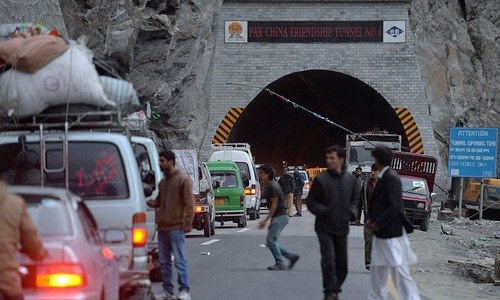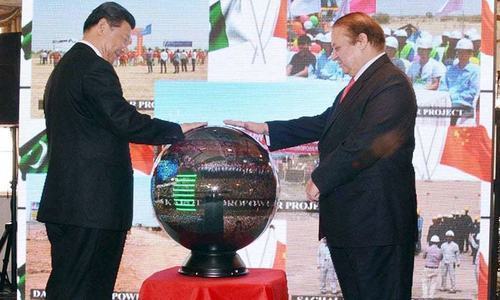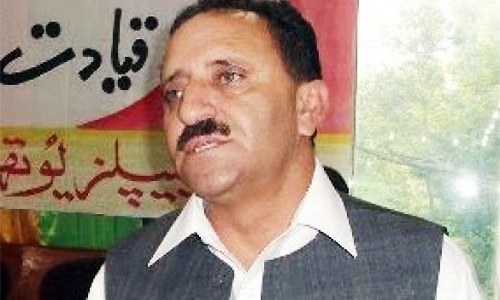No space for GB on CPEC table

Standing as a reincarnation of the historical old silk route, the China-Pakistan Economic Corridor (CPEC) is defined as a game changer. China has pledged to invest $46 billion in a highway network from Khunjrab to Gwadar, energy projects and the establishment of economic zones. The stated policy of the Pakistan government is to spread the benefits of this investment through the equitable distribution of resources and projects to all provinces. Curiously, Gilgit-Baltistan (GB) is seldom mentioned in these statements by government functionaries. CPEC projects were actually initiated with the construction of the Gwadar Port by the Chinese and the upgradation of the Karakorum Highway (KKH) entering Pakistan through GB.
It all began when KKH was built in the late ’60s and ’70s along the Gilgit and Indus rivers. Thousands of Chinese crossed into Pakistan to build the road. It was a daunting task to take up this massive project manually with very limited machinery. However, the Chinese and their Pakistani counterparts blasted their way through sheer hard rock walls, shifting gravel and mountains to carve a road, popularly known as the eighth wonder of the world. It was indeed a feat of engineering and the courage of thousands of men who lost their life while forging this road is commendable.
The local population was apprehensive of this massive ingress and its impact on their daily lives. The government allayed their fears by telling them that this road would open GB to the world, bring prosperity to the area and new jobs for the youth. Highly patriotic, the people of GB welcomed this development. It did open the area to the outside world and created employment. But a price had to be paid in the shape of years of unrest and bloodshed in the region due to sectarian strife introduced to the area as outsiders brought in contested ideologies to bear on local political, religious and social dynamics. Further, the huge trucks taking goods to and from China spewed smoke and polluted the environment, and also brought in drugs and guns.
Since GB has no say in CPEC projects, there is no one to safeguard its people’s rights.
This area has a unique history as its people after a valiant two-year struggle overcame the organised army of the Kashmir state, liberating the area and acceding to Pakistan in the hope of becoming Pakistanis. Tragically, the Pakistan government, instead of integrating these patriots as citizens accepted their accession only for administrative control, defining it as a disputed territory of Jammu & Kashmir. The purpose of this was in anticipation of creating assured votes in the event of the promised plebiscite materialising. The plebiscite never took place, and there is no possibility it will, but this region was tagged to the Kashmir dispute and administered through presidential decrees. Because GB does not have any representation in parliament and is not part of Pakistan constitutionally, it does not figure in state structures where decisions regarding the federating units are taken. Resultantly, they have no say in CPEC projects. They are not even represented in any consultative and planning committees of the projects.
CPEC projects according to the Planning Division are designed for the economic development of each province. For GB, except for the KKH upgradation that will result in scattered ribbon development of services along the roadside, no CPEC projects have been included in the overall plan. Surprisingly, no hydropower project has been identified for funding under CPEC. The government of Pakistan is focused on coal and LNG projects located in the plains of Punjab and Sindh. The Planning Division has oddly ignored the potential of hydropower projects. Along the KKH, the potential of run-of-the-river projects is phenomenal. At Bunji alone, a project of 7,400MW of energy can be established with two additional projects of 2,000MW each upstream from this location. These alone can meet much of Pakistan’s energy requirements. Hydro energy is environment-friendly, low-cost and economically viable; it can save billions of dollars in forex required for the import of oil, LNG and coal. While the world is opting for clean energy, we are opting for polluting power-generating projects.
Since GB has no say in CPEC projects, there is no one to safeguard its people’s rights. The only way to give them a voice to ensure protection of their claim for economic development through CPEC is to resolve their constitutional status with representation in parliament and all government structures. The government must recognise that there has been a silent revolution in education in GB thanks to NGOs, and the literacy rate amongst the youth is now almost 100pc. Thus, they may not accept the oft-repeated promises of good times to come. They want to be part of decisions that directly impact their future. Without resolution of the legal status of GB, this is impossible.
This state of legal void will give rise to questions about the entire arrangement of agreements for these projects. And when the discrimination becomes apparent in project implementation, it is likely to give rise to discontent that can degenerate into protests endangering the entire scheme. The committee established under the chairmanship of the foreign affairs adviser must take into account these factors, while considering the fundamental constitutional issue.
To safeguard their official stance on Kashmir, the Foreign Office should use its imagination as it is not a problem of the people of GB who have opted for Pakistan unconditionally. Any halfway cosmetic solution such as observer status in the National Assembly (as was granted in the early 1980s) will be unacceptable. They must have the full rights and privileges of a Pakistan citizen with representation in parliament. A discontented population at the head of the economic corridor can derail the entire project, which does not bode well for the people of GB and Pakistan, the country that they love and died for in armed conflicts with its enemies.
The writer, a former IGP Sindh, belongs to Gilgit-Baltistan.
Published in Dawn, January 11th, 2016




















































